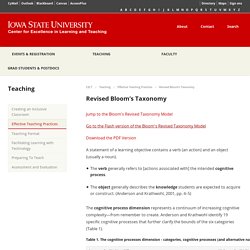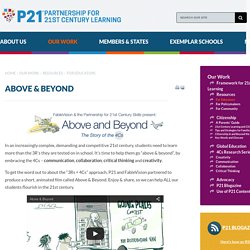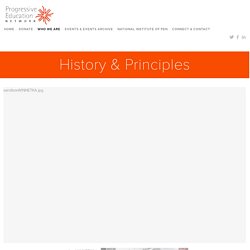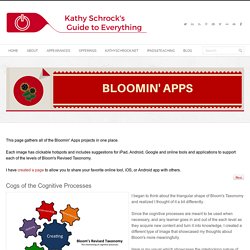

Value-Added Information. Revised Bloom’s Taxonomy – CELT. Jump to the Bloom's Revised Taxonomy Model Go to the Flash version of the Bloom's Revised Taxonomy Model Download the PDF Version A statement of a learning objective contains a verb (an action) and an object (usually a noun).

The verb generally refers to [actions associated with] the intended cognitive process. The object generally describes the knowledge students are expected to acquire or construct. The cognitive process dimension represents a continuum of increasing cognitive complexity—from remember to create. The knowledge dimension represents a range from concrete (factual) to abstract (metacognitive) (Table 2). S Learning Standards. The Nine Steps of Project-Based Learning. Year-long Curriculum Map. Mathematics / Curriculum Maps. The Nine Steps of Project-Based Learning. Project Based Learning. One on One for Everyone. FIP Your School Ohio - What is FIP. Compare Reports Elementary - EdReports.org. Center on Response to Intervention. Response to Intervention. What Works Clearinghouse.
Youtube. The difference between Concepts Models and Theories. Home - DISC Personality Testing. Above & Beyond. In an increasingly complex, demanding and competitive 21st century, students need to learn more than the 3R’s they are tested on in school.

It’s time to help them go “above & beyond”, by embracing the 4Cs – communication, collaboration, critical thinking and creativity. To get the word out to about the “3Rs + 4Cs” approach, P21 and FableVision partnered to produce a short, animated film called Above & Beyond. Enjoy & share, so we can help ALL our students flourish in the 21st century. Many members of the Partnership for 21st Century Learning helped shape and refine this story – using their communication, collaboration, critical thinking and creativity skills.
Special thanks to Ken Kay, Tim Magner and the Executive Board and Strategic Council of The Partnership for 21st Century Learning for all their time, talent and vision on this project. “Above & Beyond” was written by NY Times #1 best-selling children’s book author/illustrator Peter H. History & Principles — Progressive Education Network. History The roots of the network can be traced to the early 1900’s and the Progressive Education Association, once one of America’s leading educational organizations, which greatly influenced the shape of 20th Century education in America.

The history of the association is chronicled in Lawrence Cremin’s The Transformation of the Schools (1965), and Patricia Albjerg Graham's Progressive Education: From Arcady to Academe - A History of the Progressive Education Association (1967). PEN owes its inspiration to the early pioneers of the progressive education movement, many of whom founded schools which are still in operation today (i.e.
John Dewey – The Lab School in Chicago, IL; Lucy Sprague Mitchell – The Bank Street School in New York City; Francis Wayland Parker – The Francis W. Parker School Chicago, IL; Caroline Pratt – City & Country School in New York City; Carleton Washburne - Winnetka Public Schools). Principles Purpose. Home. The Impact of Technology on Education. Chapter2 - Google Slides. Have You Heard About the Concept of a Hidden Curriculum? Evaluating Educational Apps.
Bloomin' Apps. This page gathers all of the Bloomin' Apps projects in one place.Each image has clickable hotspots and includes suggestions for iPad, Android, Google and online tools and applications to support each of the levels of Bloom's Revised Taxonomy.I have created a page to allow you to share your favorite online tool, iOS, or Android app with others.

Cogs of the Cognitive Processes I began to think about the triangular shape of Bloom's Taxonomy and realized I thought of it a bit differently.Since the cognitive processes are meant to be used when necessary, and any learner goes in and out of the each level as they acquire new content and turn it into knowledge, I created a different type of image that showcased my thoughts about Bloom's more meaningfully.Here is my visual which showcases the interlocking nature of the cognitive processes or, simply, the "Cogs of the Cognitive Processes".
IPAD APPS TO SUPPORT BLOOM'S REVISED TAXONOMYassembled by Kathy Schrock Bloom's and SAMR: My thoughts. Critical Evaluation of Apps. What Works Clearinghouse Resources You Can Use: A Webinar for Faculty of Principal and Teacher Preparation Programs: What Works Clearinghouse. What Works Clearinghouse. Response to Intervention. Every Student Succeeds Act (ESSA) The Every Student Succeeds Act (ESSA), which replaced the No Child Left Behind Act, asks Ohio to clearly articulate its plans for using federal funds to ensure accountability for all students, create safe and supportive learning environments, encourage innovation and extended learning opportunities, and more.

What’s happened so far? The state requested and received feedback from thousands of Ohioans since spring 2016 (learn more about stakeholder engagement). Using that feedback, the Ohio Department of Education developed and released an initial draft plan in February 2017.